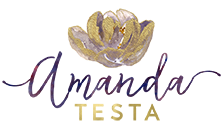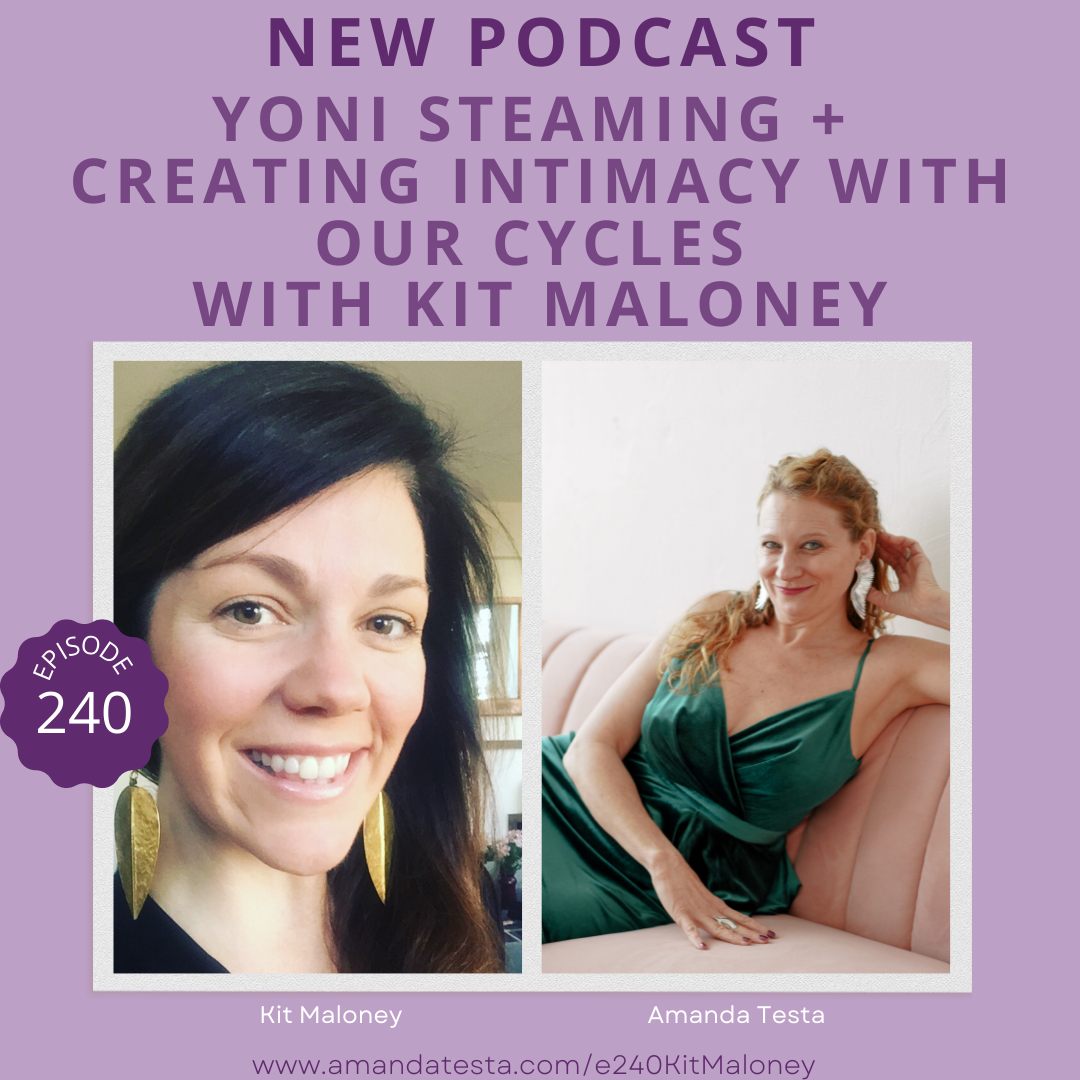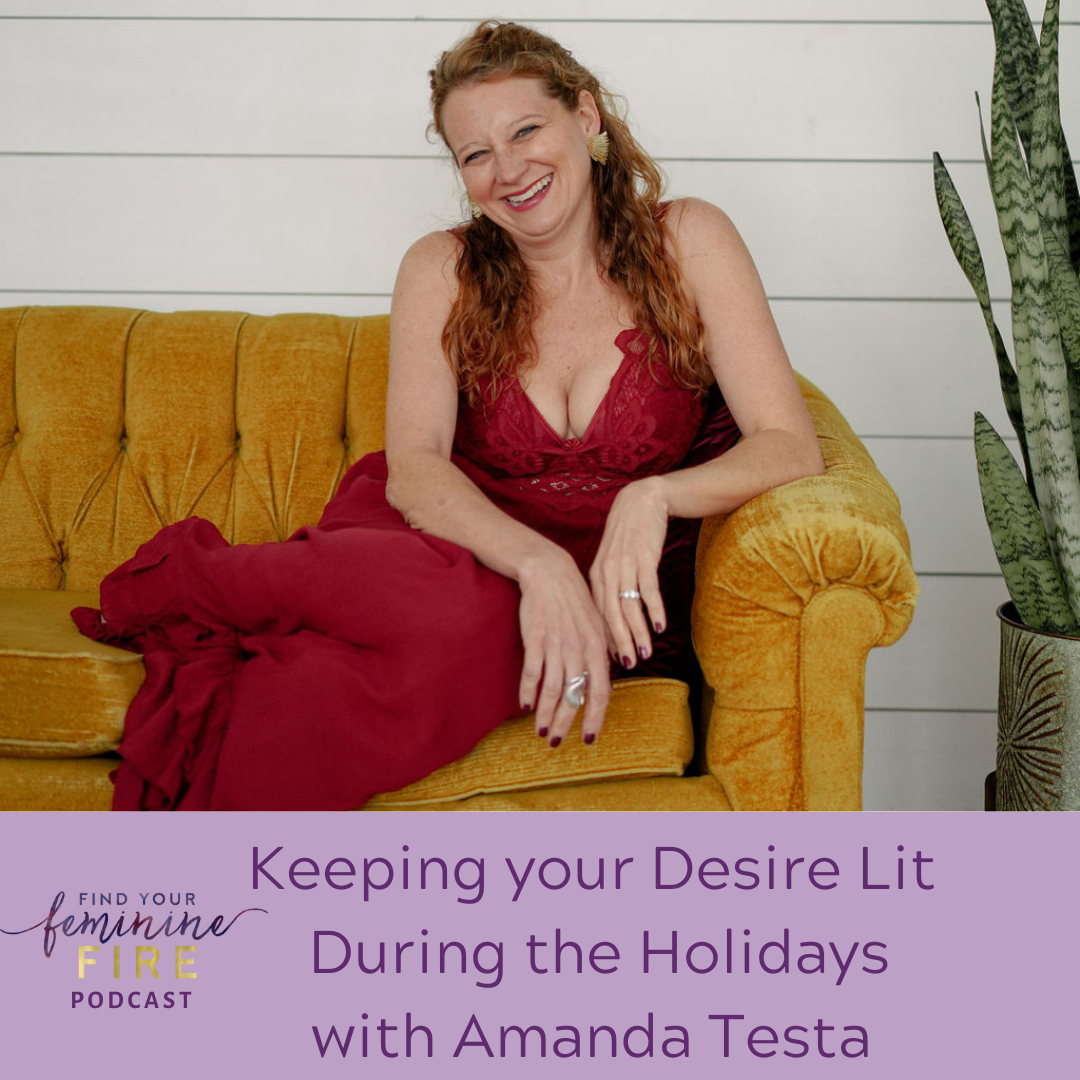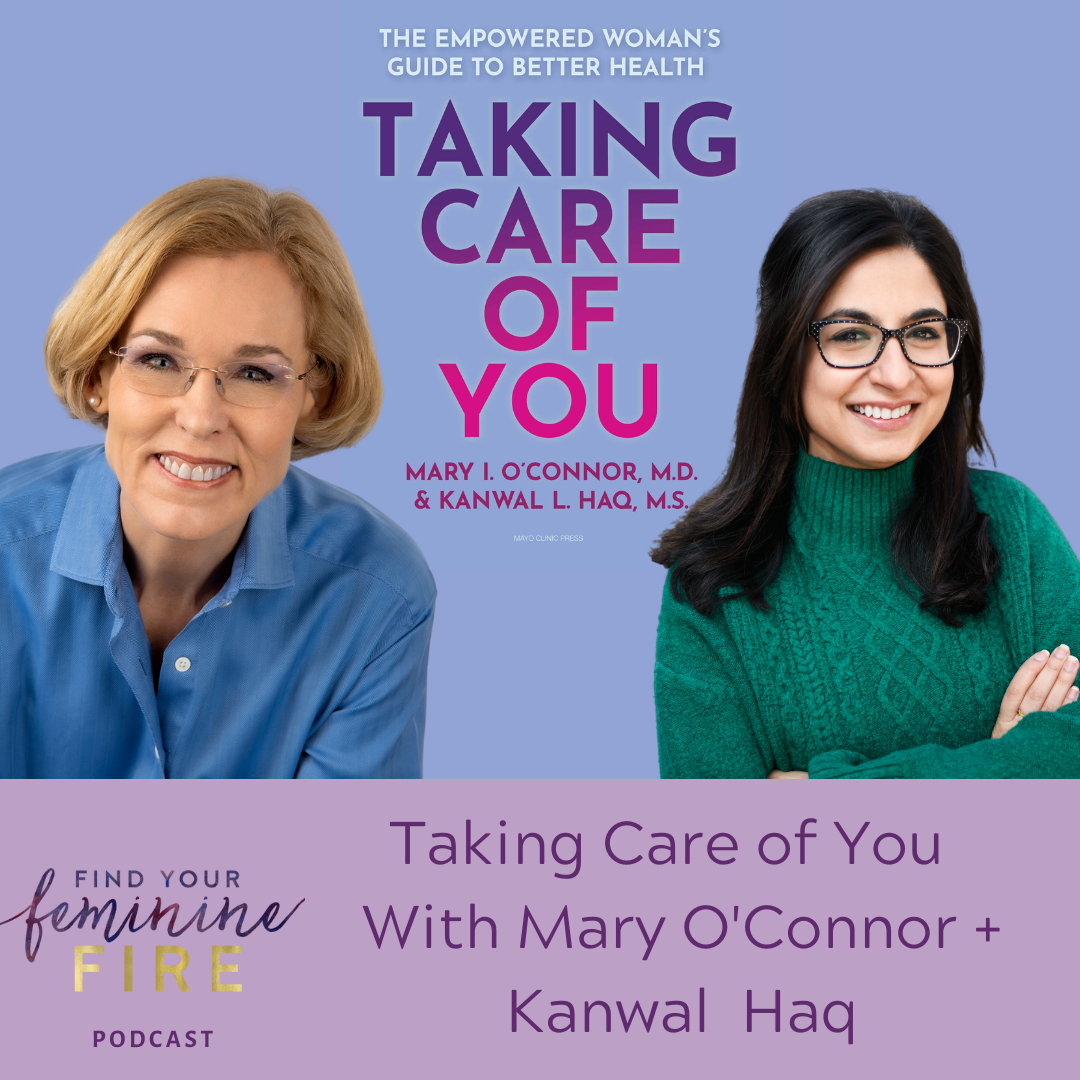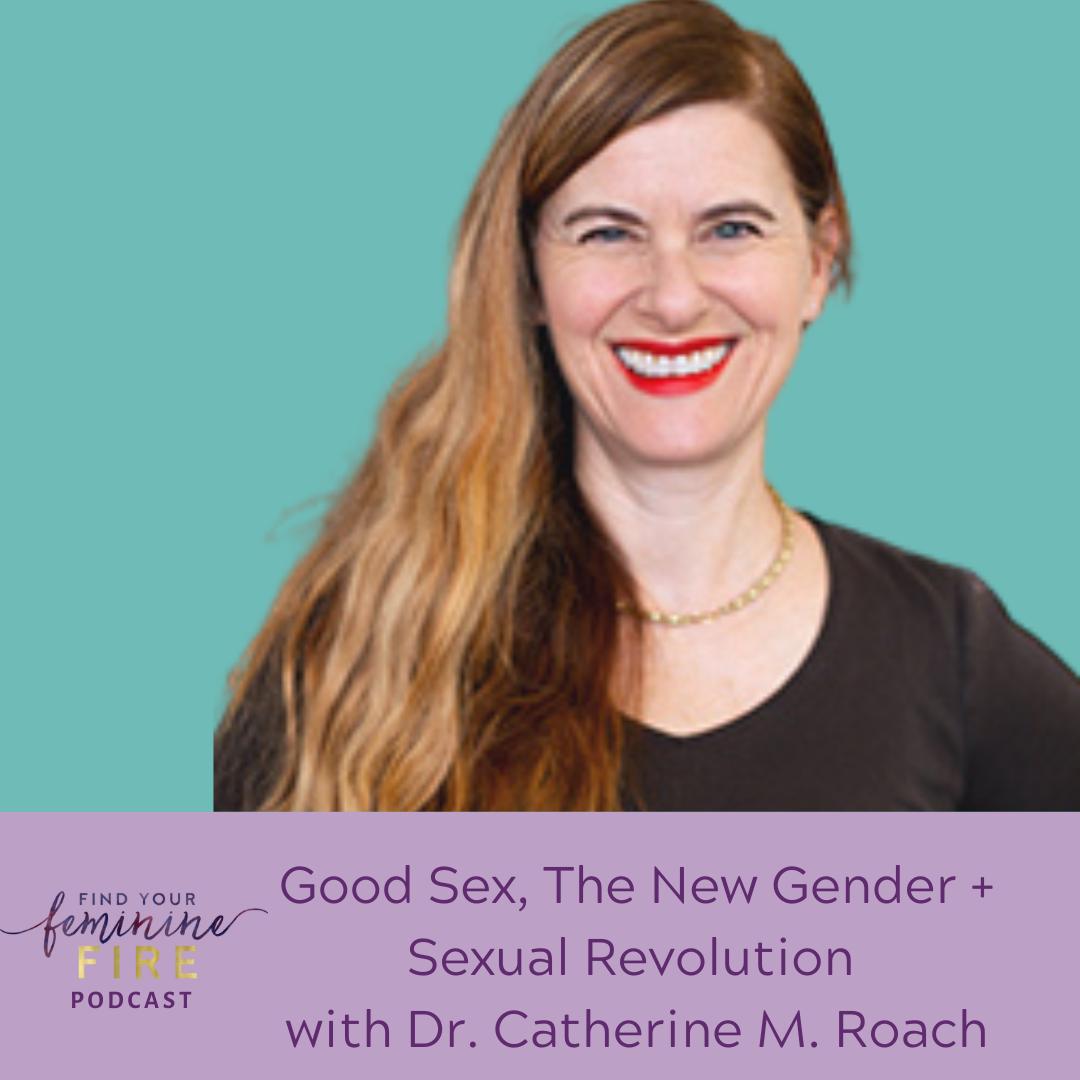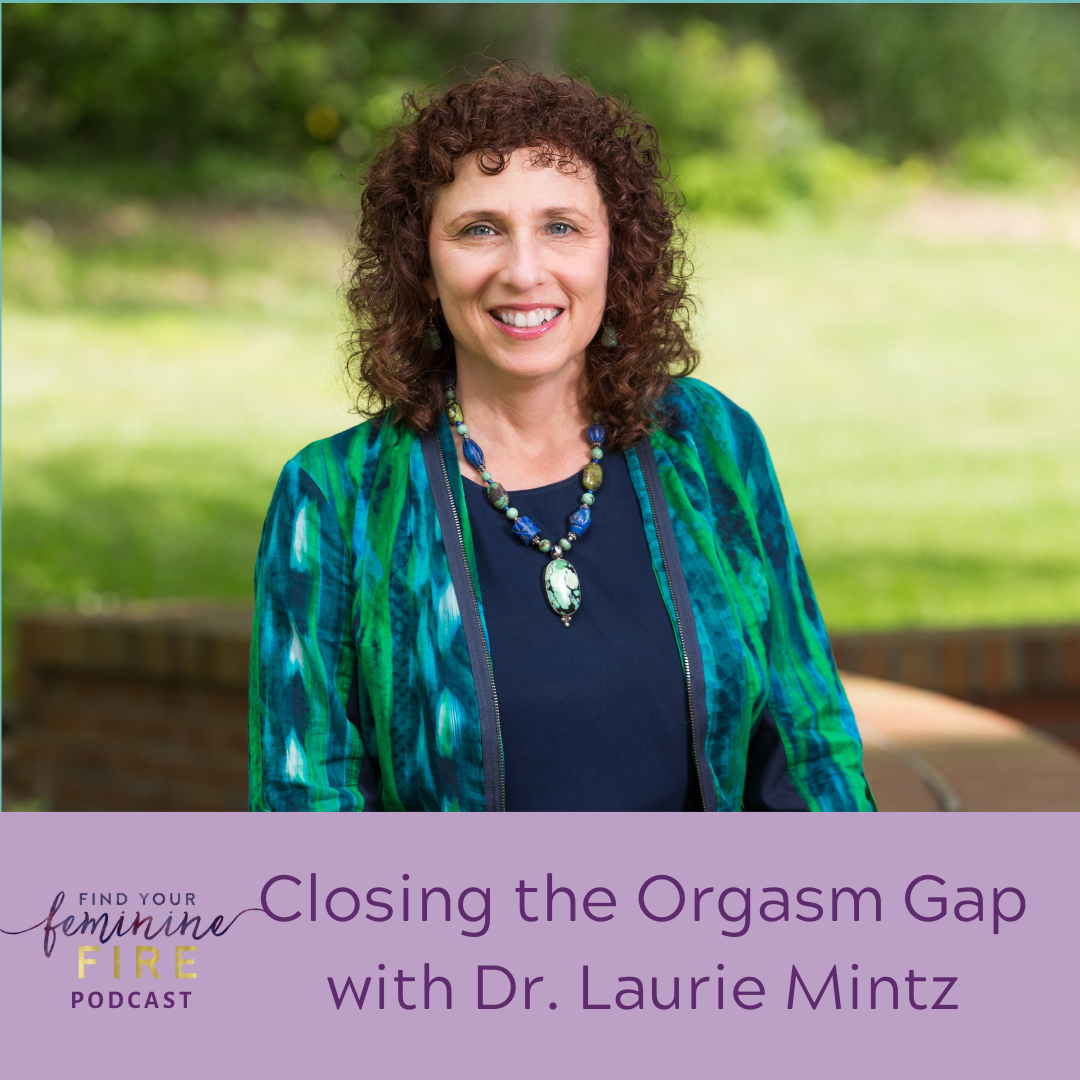What it really takesTo get what you wantwith Amanda Testa
As I was driving my kiddo to school yesterday, the Mariah Carey song, “All I Want For Christmas is You” song came on, and I started to think about how so many women identifying people have a hard time knowing what they want.
Listen into this episode as I share why it can feel hard to know what you want, how to learn to tune into your needs, and how to TRULY get what you desire.
You’ll learn how to tune into what you really want, how to ask for it, and then, how to open to receive your desires.
Listen below, or tune in via: Apple Podcasts,Stitcher or Spotify.
Complete Transcript Below
In this episode you’ll discover
Why it can be so challenging to know your wants and desires.The keys to getting clarity on what you want.Understanding the Archetype of the Soul Seed, and how to use this to connect to your worthiness and receptivity. Why we don’t have to contort ourselves into uncomfortable identities to have our needs met. How to ask for what you want, in the bedroom and beyond.How to become more open to receiving. What it means to be in coherence, and how this helps us to trying have what we want. Join the ritual to learn more HERE.and much more!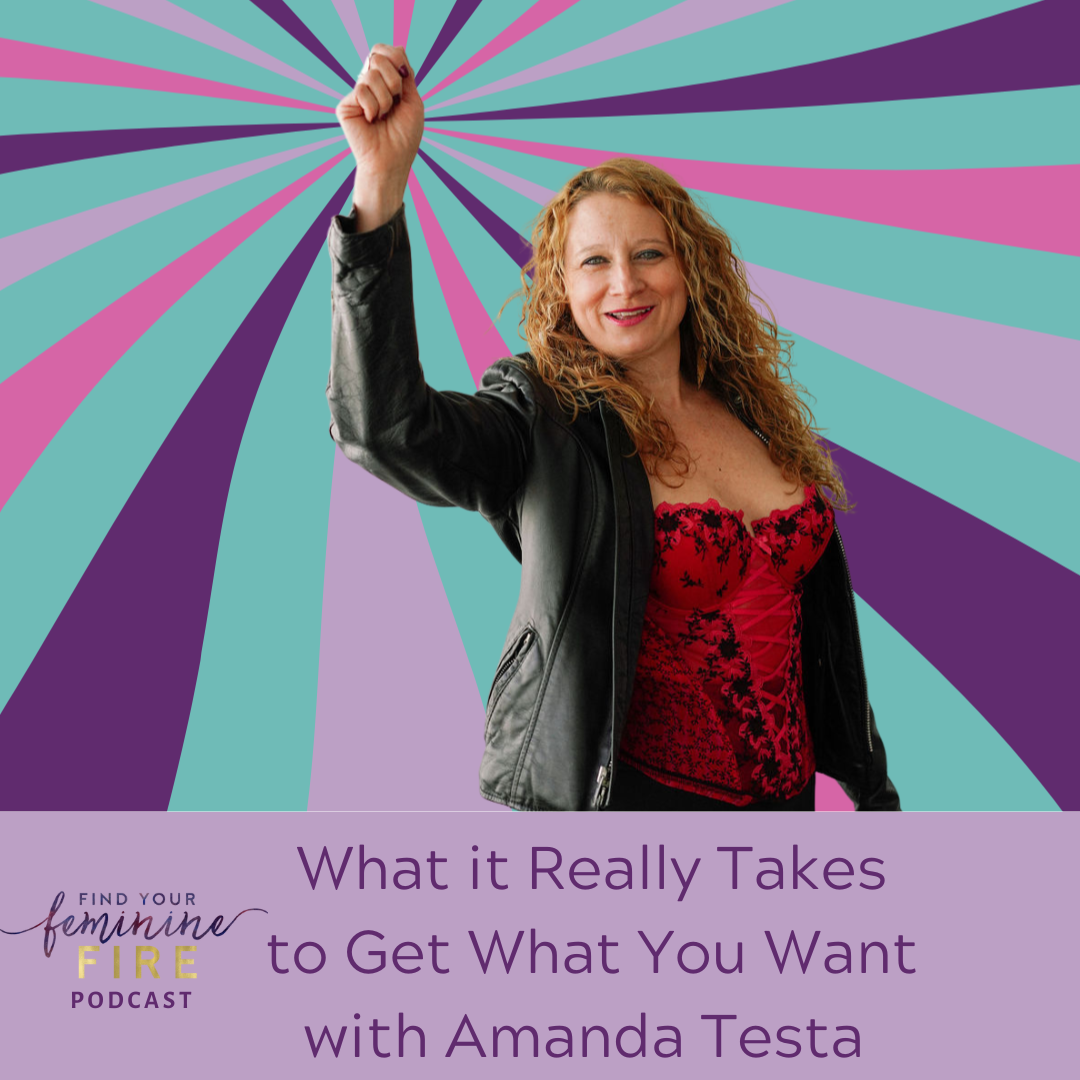
JOIN IN THE DISCUSSION ON THIS EPISODE AND MORE IN MY FREE FACEBOOK GROUP, FIND YOUR FEMININE FIRE HERE.
Hello, I’m Amanda Testa. I’m a trusted healer, coach, and guide who’s served hundreds of clients over the years with masterful skills in coaching, pleasure embodiment, and somatic trauma resolution.
My clients tenderly heal their relationship with their sexuality, shamelessly embrace pleasure, own their sexy confidence, and cultivate deeply connected relationships with my fiercely loving support.
When I not leading transformative sessions, you can find me snuggling my spunky 10 year old, flirting with my sexy hubs, playing in nature, enjoying live music, and having epic conversations about sex with fellow experts on my Find Your Feminine Fire podcast.
After thousands of hours of training in trauma informed sex and relationship coaching, yoni egg coaching, tantric sex coaching, sacred sexuality, energy healing, somatic trauma resolution, and more, I’ve seen time an time again the magic and wisdom of our bodies. We all have the ability to return to our blueprint of health, aliveness, pleasure and sovereignty, and you can too.
With my powerful, loving and gentle support my clients find their desire and pleasure again, find safety and bliss in their bodies, and remember they are enough just as they are.
Want more support? Schedule a confidential 1-1 call with Amanda here.
Have a topic or question you’d like Amanda to address on a future episode? Submit it on this anonymous form.
EPISODE 241: What It Really Takes To Get What You Want [Fun, Empowering Music] Amanda Testa: Hello, and welcome to the Find Your Feminine Fire podcast. I am your host, Amanda Testa. I am a sex, love, and relationship coach, and in this podcast, my guests and I talk sex, love, and relationships, and everything that lights you up from the inside out. Welcome! _______ I was driving in the car yesterday, and Mariah Carey’s “All I Want For Christmas Is You” came on, and it got me thinking. You know that one [Singing]: “All I want for Christmas is you!” But it made me laugh because, you know what? I think we actually want a lot for Christmas. I think we actually want a lot in general, and we just don’t know how to connect to it. So, I wanted to do a podcast on what it really takes to get what you want and forget the holiday. The point is that what I hear and what I see so many times with my clients and my students is that knowing what we want can be challenging, and we often have a ton of wants, a ton of desires, and sometimes we don’t know what they are, or we don’t want to name them or when we do, we feel like it’s too much. So, these are important things. So, today, I’m gonna talk about why it’s hard to connect to what we want, what we can do about that, and how to find a way to start to tune in more to your needs and wants on a regular basis. So, this is something else I hear a lot from specifically people that are conditioned as women in this culture. A lot of the times we are taught to give and give and give and make sure everyone else is taken care of and then maybe we’ll take care of ourselves, right? So, “Oh, don’t worry about me. I’m good!” “But what do you want for the holidays?” “Oh, I’m good. Don’t worry about me. I don’t want anything. Oh, no. I got this. Don’t worry about that,” right? 1:01 You might have heard that before coming out of your own mouth or someone that you love’s mouth. So, I invite you even just to think what is it that you want? Do you want to feel connected in your relationship? Do you want to be able to take a night away and feel that feeling like when you first got together, that you can be together for hours and hours and just can’t get enough of each other and just have your partner send you loving texts and talk about how much they love you and want you and how much they can’t wait to put you in their mouth and all those delicious fun things. Do you want that kind of relationship where you have that deep connection? Maybe you want to feel more inspired in your work. Maybe you want to just really feel like, “Ah, I’m excited about what I’m doing. I’m feeling lit up. I’m feeling rewarded. I’m receiving so much from the work that I do, from the people that I work with, whatever it is.” That can be another area, too. I see, a lot of the times with my clients, that work can just feel overwhelming because it’s like the treadmill or maybe you’re doing something that’s not really what you want to do but it’s checking off the boxes in some way or maybe it’s that you want to just feel that excitement again and not just feel like you’re on a treadmill, constantly, constantly working and giving and never having a break. So, maybe you’ve lost just that spark that made you excited about what you were doing in the first place, and that’s okay, right? So, this is why we have to tune into what we want, and if there was a magical Santa, if you could really ask for what you want and know, without a doubt, that you would be received, what would you ask for? If you knew, without a doubt, that what you wanted would be given to you, what would you ask for? I think this is such a good time of year to talk about this because this is a time when we’re thinking about what we want, right? We’re wrapping up the year as I’m recording this episode. It’s December 2022, and we’re wrapping up a year, and we are kind of reflecting, right? We’re thinking about, “What do I want for next year? What do I want to be different? What is going on? What would I love to see change?” We’re thinking about how we want to be in 2023. I can’t believe it’s almost 2023. 2:04 So, oftentimes, what I see is the reason we’re not getting what we want is because there are parts of us that aren’t in alignment with what we want, right? There’s probably part of us that’s like, “Oh, we can’t have that,” or, “We don’t deserve that,” or, “That’s not realistic. Why are you thinking that? That’s too much. Why would you ask for that?” All of the filters that we put on ourselves, right? All of those parts that are standing in the way of getting what you want. And so, this is why it’s important to know what we want. That’s the first step because it’s a process, right? We need to learn to articulate what we need. We need to be able to put our needs first. This is a huge thing. I remember the first time I really started doing this work, when I started investing in myself in this way. The first time I ever invested in a coach I remember freaking out. I was like, “Oh, my god. This seems crazy. This is a crazy thing to do. I can’t believe I’m investing in myself like this,” and I was so burnt out. This is after my daughter was born, and I was just so disconnected to myself. I had zero clue what I was doing. That is such a huge portal of transformation, when you have a kid. And so, I started working with a coach, and let me just tell you, it truly transformed my life. I mean, just to have that kind of support, there is nothing like it, and that’s one of the things I love about this industry. I love coaching. I also don’t like a lot of things about this industry, and I will be quite vocal that I think a lot of things out there are done really poorly. Maybe sometimes people are really slick marketers, but what they’re doing on the inside is not matching what they’ve been preaching or there’s just some schemey stuff out there. So, you just have to trust yourself. But I feel like when you find the right people that are truly good at what they’re doing, it’s so amazing. That is one of the reasons I love this work and I love working with my coaches. One of the coaches I’ve working with lately is one of my mentors who’s amazing, Rachael Maddox, and I’ve just been having such great sessions with her, and a lot of the things that are coming into the field that I’m hearing from my own clients and that I’m hearing from my own students and what I’m feeling are really similar because there is some truth to what’s going on collectively. 3:03 So, one of the things I’ve learned about that is just having that support. We need support because even if we know everything to do — right, we often know all the things to do. We know how to take care of ourselves. We know how to do all the things. But sometimes when we’re trying to figure it out for ourselves, we sometimes can’t see the forest through the trees if that makes sense, right? We need someone to guide us. And so, that’s why I think it’s so important to be held, and even for me, right? I have a million tools. I know everything to do. But I need someone to hold me in it so I can drop in deeper. We’re not meant to do things alone, and that’s why I think community is so important because when we can be in community where we can share what we want and be celebrated in what we want, it’s powerful because this is not the norm, right? This is not the norm, and that connection is the opposite of isolation. I was talking to one of my best friends the other day, and she was talking about how she feels so isolated and lonely, and I’m like, you know what? It’s true. If you’re a parent, if you’re just whoever you are rolling through this crazy world that we’re in, specifically for caregivers, it can feel really challenging. I know as our kids get older, you don’t have that same connection with people, right? You’re not doing things with the kids as much. They’re going on playdates or they’re going to play with their own friends, and even if you have young kids, it’s hard there too because you’re trying to keep your kid from eating a rock or poking another stick in some kid’s eye. You’re not really connecting with the person that you’re with, right? [Laughs] You’re parenting, and so, it’s hard to connect there too. And with COVID, that connection piece is hard so when we can find ways to be held and supported, it is so important because that is the opposite of addiction and of isolation is connection and community, right? The opposite of shame is bringing these things to light. They’re so important. And so, one of the reasons I’m bringing this up is because when it comes to getting what we want, there’s a roadmap to follow, and one of the things I love to work with with my clients, one of the tools that I use is an archetypal map. 4:03 I’m gonna talk a little bit about one of the archetypes today. There are seven that I work with, but I’m gonna talk about one today. It’s called the soul seed, and it’s so beautiful, and I really want to invite this in because I think when you can have an understanding of where you want to go, it makes it much easier to get there, right? Also, understanding that, again, we can only go as fast as the slowest part of us wants to go. Another one of my teachers and mentors, Layla Martin, says this, and it’s so true. We can only go as fast as the slowest part of us wants to go. That can be very frustrating, especially in business and relationships because our cognitive brain is like, “I’ve gotta do this, and I want to do this, and I want things to change now, and why can’t this be the way I want it, and why can’t I be the way I want to be?” Blah de blah de blah. But this is why I’m so passionate about really slowing down and tuning in. This is one of the reasons, too, why it can be so important to understand the language of your body and kind of have that more somatic work. That’s another thing that I think is really important that we’re gonna do is working with the body to see what’s beneath there. What is beneath there? What is your body telling you that you need to listen to a little bit more, right? I just want to share. I am doing a class on this on December 19th. December 19th at 1:30 PM Mountain Standard Time, I’m gonna be doing a ritual around this because I was doing this ritual this weekend, and it just brings in so much clarity, and I thought, “You know what? I need to share this because it’s so powerful,” and if you have a question around, “What is my next step,” or, “What is the clarity I need,” or, “What is it that I want,” then this is an amazing ritual to help you get there. 5:01 And so, you can join us. Go to amandatesta.com/bizritual, and you can join us in that because this is one of the ways you can learn to be in coherence. So, when I’m talking about coherence, it’s all the different parts and pieces of you going in the same direction, right? Everything is in alignment, and everything is moving forward at a pace and in a way that feels doable. That is so key. It has to feel doable for all parts of you. So, please join me for that. I’m gonna go back into a little bit of talking about this archetype because I think it’s so key. When we’re trying to get what we want, this is the number one thing to look at. I love this archetype because it’s all-around worthiness and receptivity, right? When you think about your soul seed, this is the part of you that is totally healthy, totally pure. This is when you were first brought into this universe. It’s the center of everything where you remember how to feel your needs, how to ask for your needs, and how to receive your needs. 6:05 All your needs, the needs for food, for shelter, for clothing, for resources, for money, for care, for attention, for connection, for safety, for belonging, all these needs that we all have, it’s such a powerful thing, right? Developmentally, that’s kind of how we come into the world, right? We come into the world, and we are going to feel hungry, and then we might cry. We cry for our need to be met, and then our caregiver comes and nourishes us or gives us a bottle and then we are fed. So, we can receive that need, and that, throughout our life, of course things change, and things happen. We may or may not have gotten our needs in the way we wanted, and that affects how we show up to what we want, right? So, when you have the experience of being seen and having your needs met and not just knowing this but feeling it on a visceral level in your felt sense, in your body, that you have been seen, your needs have been met, you’ve been cared for, you’ve been protected, you’ve been provided for and loved in all the ways you’ve needed it, you can sense what you need, you can speak what you need, and you can receive what you need, right? 7:18 On the other hand, when you have the experience of being neglected or not having your needs met, maybe you’ve been unfed or unseen or untended to or excluded, unloved, untouched, left alone. Maybe your caregivers are just too busy, and they didn’t have the tools to care for you the way they needed. These are forms of neglect, and it can be physical, or it can also be emotional. And so, as we go through life, those imprints affect the way that we show up. They affect the way we tune into what we want and need. They affect the way we feel deserving and worthy about what we want and need, right? And so, we all, to some degree, can suffer from this, and it shows up in a few ways that I want to talk about. 8:02 So, the first way it shows up is by denying what you need, by just not feeling you have any needs, as I mentioned in the beginning, like, “Oh, I don’t need anything.” It’s neglecting yourself, right? And so, it can show up as not knowing what you need or feeling like your needs don’t matter or not wanting to put yourself first. “People think it’s selfish if they do that,” or, “If I have too many needs then my partner won’t want to be with me anymore. I just don’t even know what I need. I’m just ashamed I don’t even know what I need. Am I even worthy of having my needs met? I just don’t feel like I can ask for that.” All those things, right? I feel like in our culture this is a very martyr type of experience where you don’t want to put yourself first, right? You put everyone else first. The other way that can show up is rigid self-reliance where you meet all your needs yourself, where you don’t trust others to show up for you, where you take on way too much (again, this is the martyrdom), not reaching out for support, taking on too much, and this can often feel like it’s hard to trust others. 9:15 “People will let me down. Let me just do it. It’s just easier if I do it. No one can do it as good as me. I always have to do everything anyway. Who can I trust to take care of me? I’ve got to be the one to do it all.” The other way it can show up, too, is just being defiant. Maybe escapism, that kind of numbing behavior, taboo relationships, food addiction, love addiction, sex addiction, substance addiction, codependence, all these things, right? “I know this is not the healthiest coping mechanism, but I really need it,” or, you know, “There’s nothing wrong with this. So what if I drink three glasses of wine every night?” or, “I’m just really into having seven cups of coffee every day,” or, “I know that this relationship isn’t great, but, man, we have some great sex,” or whatever it is, however it’s showing up. That is another way. 10:04 And so, basically, the reason I share all of this is because these are kind of the ways that we are disconnected from our wants and needs. These are the ways that the imprints show up. What we want to do is we want to kind of slow down, rewind, and tune back into what it is that we need. What is it that we need? Then, being able to speak and ask for what we need, and then being able to meet and receive that need, allowing that need to be met. Again, this is a very simplified explanation of this. I work much deeper around this with clients, but I think it can be such a great map to just look into and feel into, like, which one of these do I feel like I resonate with and what can I do about it. Number one is to slow down and reconnect to what it is that you need and want, right? Oftentimes, our body is letting us know when we want things or when we don’t or when we’re moving in a direction that doesn’t feel right for us, right? And so, we can learn to tune into that a little bit more. 11:03 The other thing is we often have needs that we aren’t even aware of. And so, the more we can explore, the more we can figure out what those are so we actually can meet those needs. I’ll give you an example because I think this is one small way that this can weave a really big transformation. One of my clients is a busy financial executive. And so, she had a lot on her plate and is really good at taking on a lot, very, very, obviously, successful, and really good at organizing her household, taking care of everything, but also kind of taking on too much and saying yes to all the things, over-giving, over-tending, over-caring. But also, in the bedroom or in her personal relationship, she wasn’t really able to speak up for what she wanted and needed, and that was a challenge for her. So, through doing a lot of this work, what she was able to do is kind of tuning in more to what she was needing so she could ask for it. It transformed her relationship, she and her partner had a 180-degree turnaround in the bedroom, as well as, she started saying no to things. 12:09 She sent me a message, and she was like, “Oh, my god. I just told the PTA I’m not gonna do it again next year, and it was the biggest weight off my shoulders, and I am so excited because it’s freed up so much time in my schedule, and I started painting again,” and just the ripple effect from those types of decisions is huge. They’re huge, and even just when you can feel that [Exhales], that expansion, that exhale in your body that just changes the way you show up in the world. I’m sure you can relate. The other thing is, oftentimes, we feel like we have to just be a certain way to get what we want, we have to conform, or we have to contort ourselves to feel like we belong or that we deserve to get what we want. This can also be a way where, like, “Well, I’m bad, so I don’t deserve that,” or, “I did this wrong, so now I’m gonna just flagellate myself,” all the ways that shows up. I was thinking today, I had mentioned this story the other day because I was talking about it with my coach, but it’s really relevant, I think, in this situation because I was remembering the story of growing up in The South in a really conservative environment, and I remember it was a lot of looking extra perfect, right? 13:16 I remember we would get all dolled up for church, and so, we’d have our beautiful, starched dresses, the pleated-cut dresses with the big, lacy, smocked collars and our white tights that were very uncomfortable and those pinchy, white, patent leather shoes, and I remember we would sit and watch Dukes of Hazzard on Saturday nights while my mom would roll our hair in those sponge curlers. (Remember those sponge curlers?) Oh, my gosh, they were uncomfortable to sleep in, but they did give you some beautiful curls. So, we’d wake up, and we’d be beautiful with our curls, and all dressed up so pretty, and then my mom made us stand up in the back of the car on the way to church so we wouldn’t get wrinkled. And so, I remember just as kids are, we were probably a little more rambunctious than we needed to be sometimes in church, and my mom would put her arm around us, so it looked like she was giving us a hug, but what she was really doing is she was jabbing her nails into us and being like, “Stop it!” [Laughs] 14:11 And so, I think it’s a funny story, but also, I say that just because a lot of us get that kind of conditioning coming along of you have to look a certain way, you have to be perfect, you have to be this way to be seen as valuable or to feel like you deserve what you want or to get what you want, and, of course, this was not my mother’s intent, by any mean, any way shape or form. It’s just the culture we live in. And so, I just say that because now what I’ve learned through my life is I don’t have to have that filter. I can be however I am and know that that is okay. I can be worthy of having my needs met no matter what, and I want to invite that for you as well. I feel really passionate about this because I just see it so often. Once you can tune into what you want and start to get those needs met, it is revolutionary, and it can show up in a lot of different ways, right? 15:01 In your sex life or in your relationship or in your business, however it is, it all shows up similarly. I’m feeling passionate right now talking about business, too, because, obviously, I’ve had my own business for almost a decade, and prior to that, I was in sales and marketing for my whole career (15+ years), and then I’ve also, for the past three years, been mentoring and coaching over 1,000 students through the VITA™ Coaching Certification. So, I see what happens in people’s minds around business and how it’s so connected to relationships and sexuality. It’s all so connected. So, this is why I’m very passionate about this and why I’m so good at it. I really want to weave in supporting the business owners and creative professionals in this because that’s honestly a lot of the people that come to me – busy moms that have a lot on their plate, busy caregivers, and they want to find that feminine fire like what is it that I want and how do I make the changes in my life so I can have that connected relationship, so that I can have that inspiration in my business and let it expand from there. 16:00 So, please join me for the ritual on the 19th. I would love to see you! Again, you can go to amandatesta.com/bizritual, and in the meantime, what I think would be a great way to tune into what you want, how do you get what you want, how you really get what you want is to start thinking about that. Make it a little point for the next ten days, if you can, to take five minutes whenever you can have the opportunity. Maybe it’s when you go to the bathroom because that’s the only time you have. You take five minutes, and you think about, “What is it that I need? Really, what do I need right now, and can I ask for that need, or can I meet it myself, or if I can’t, can I ask for it? Can I let myself really receive it?” It can start small. It can start small. It can start with, “I need to drink a glass of water,” and really enjoying that experience to the fullest. Also, weaving in pleasure along the way because that’s the other part that I think is so key. That’s the other thing around my work is that it can be pleasurable. It doesn’t have to be painful. It can be fun. You can find the playfulness and the joy and the silliness in it all because that’s just the best. 17:01 So, I’m gonna leave you with a little mantra, and I’ll invite you to, if you’re in a place where you can, relax and close your eyes. If you’re driving, just listen. I’ll invite you to just bring your hands to your low belly or just put your awareness on your naval. Maybe just take a few breaths into this space, this place of receptivity where you first received what you needed no matter what. You did receive enough to be here on this earth as you are today, yes. That’s a celebration. And so, maybe, as you bring your awareness to this place, I’ll just invite you to let these words land or you can repeat after me if you’d like: “I am here. I am now. I matter. I am here. I am now. I matter. I am designed to grow and to thrive. I am designed to grow and to thrive. I am worthy of feeding my needs. I am worthy of feeding my needs.” 18:10 Feel into that. Tune into what you need. You deserve it, and I want to see you get what you want. So, these are the steps that it takes to get what you want, right? Simple yet not easy, but I hope this helped give you a little more understanding of why it can feel so challenging to get what we want and how important it is to really take the time to tune into it because, truly, our bodies, we have this blueprint of health at our core, this original essence within us, and, yes, the imprints of life leave their imprints, the traumas, the challenges, those all leave imprints on us. But the more we can tend to ourselves, that health comes back online. Those parts of us that know what we need, they come back online, and it’s amazing. It’s so amazing. Again, I know that this sometimes can feel challenging, but just have fun with it. Have fun, and thank you for tuning in. Sending you so much love, and we’ll see you next week. _______ [Fun, Empowering Music] Thank you so much for listening to the Find Your Feminine Fire podcast. This is your host, Amanda Testa, and if you have felt a calling while listening to this podcast to take this work to a deeper level, this is your golden invitation. I invite you to reach out. You can contact me at amandatesta.com/activate, and we can have a heart-to-heart to discuss more about how this work can transform your life. You can also join us on Facebook in the Find Your Feminine Fire group, and if you’ve enjoyed this podcast, please share with your friends. Go to iTunes and give me a five-star rating and a raving review so I can connect with other amazing listeners like yourself. Thank you so much for being a part of the community. [Fun, Empowering Music]
